Your guide to the unique food, culture and history of Kyushu
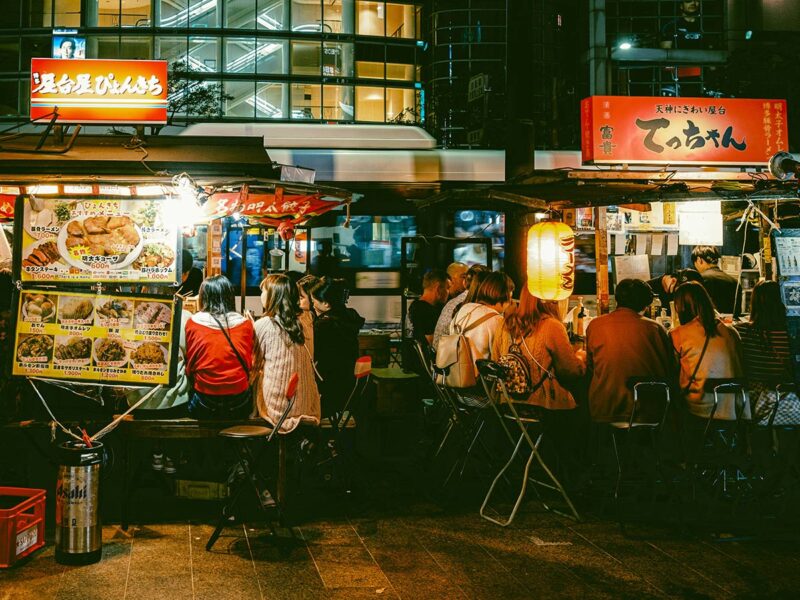
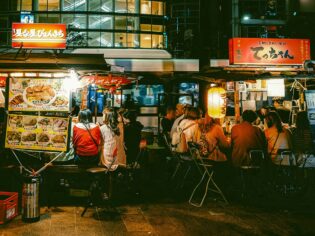
Explore the Island of Kyushu and uncover a different side of Japan.
| THIS ARTICLE WAS CREATED IN PARTNERSHIP WITH VISIT KYUSHU |
The city food stalls, samurai castles, ceramic temples, and explosive volcanoes of Kyushu are tempting us away from Tokyo.
Travel the island of Kyushu to uncover a different side of Japan, away from the dazzling lights of Tokyo and the well-trodden shrines of Kyoto. Fewer tourists might travel to its southernmost island than the rest of the nation but we’re adding it to our list. Why? Tranquil beaches and coral reefs, rumbling volcanoes and hot spring ryokans, a fascinating past of samurai and forbidden faiths, lush farmlands and ceramic shrines – and it’s only three hours away from Osaka by Shinkansen.
Fukuoka
The traditional gateway between Japan and the Asian continent, Fukuoka is frequently eclipsed by other cities. However, it throws some of Japan’s biggest festivals, dishes up incredibly cheap bowls of its signature ramen, and has a unique mix of Asian mainland and Japanese cultures.
Tonkotsu, a salty, cloudy ramen made from pork bones, originates from Kyushu. Try it at yatai markets, where portable street stalls pop up at night in the city centre, offering only a few seats at each stand.
Students visit the Dazaifu Tenmangu shrine, established over 1000 years ago, to pray for good exam results. The shrine also has teahouses, landscaped gardens, an art program and thousands of plum trees that bloom in March, ahead of Japan’s more famous sakura cherry blossom season.
In Munakata City, the three Munakata Shrines, recognised as World Heritage sites, are believed to protect travellers. Munakata Taisha on the mainland is the easiest to visit, while Okitsu-gu shrine on Okinoshima remains off-limits.
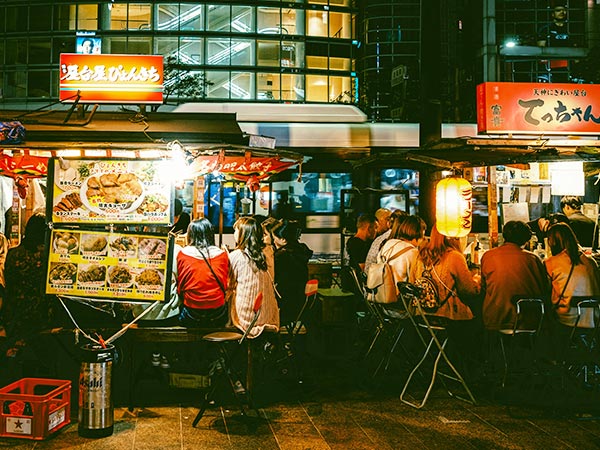
Head to yatai markets for Tonkotsu Ramen.
Saga
Even though Japan is known around the world for its distinctive arts and crafts, Saga is where you can visit what’s considered the ‘birthplace’ of ceramics. Begin your tour in the ‘ceramic towns’ of Arita and Imari, where kiln chimneys and ceramics line the small alleys. The Tozan Shrine in Arita has porcelain columns that are decorated in pretty blues and whites.
Yoshinogari Historical Park, which is focused on a hamlet from the Yayoi Period (about 300 BC), provides insight into ancient Japanese history with the park’s rebuilt settlements. Visit Karatsu Castle, Japan’s largest wooden replica, if history is your thing. Don’t forget to take a day at Takeo and Ureshino’s onsens and green tea farms.
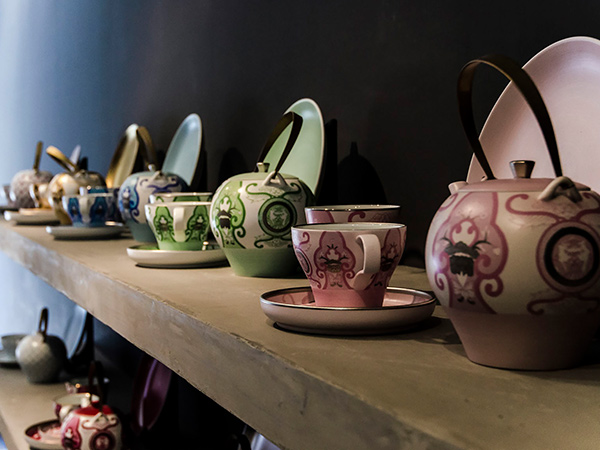
ake home a piece of artistry from the ‘birthplace’ of ceramics.
Nagasaki
Nagasaki is remembered for being one of the towns decimated by atomic bombs at the end of the Second World War, and its greater past and stunning surroundings are sometimes disregarded.
But this is where Mt Unzen, one of the most destructive volcanoes in the world, dominates its surroundings on the Shimabara Peninsula in stunning scenes. It’s also where the Goto Islands can be found – along with their intriguing past of early Christians, who practised their outlawed faith in secret amidst sleepy, traditional fishing villages and beaches, and where Japanese missions started their journeys to Tang dynasty China.
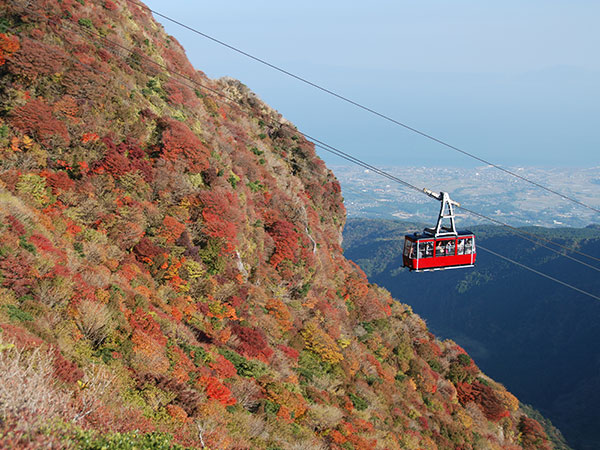
Catch the ropeway to the top of Mt Unzen.
Oita
Oita’s Usuki Samurai District retains remains of the samurai feudal era, such as temples and a medieval stronghold. The Kunisaki Peninsula in northern Oita is filled with thousands of stone Buddha sculptures, as well as one of Japan’s oldest shrines, the Usa-Jingu. In Bungotakada, visit the eighth-century Fukiji Temple and the quirky Showa no Machi quarter, a nostalgic replica of a 1950s Japanese town.
But Oita is perhaps best known for its hot spring villages, especially Beppu and Yufuin. Beppu has ‘hells’, the highly dangerous brightly coloured blue, red and orange pools, but don’t worry: the area also has plenty of lovely (and safe!) onsens to visit.
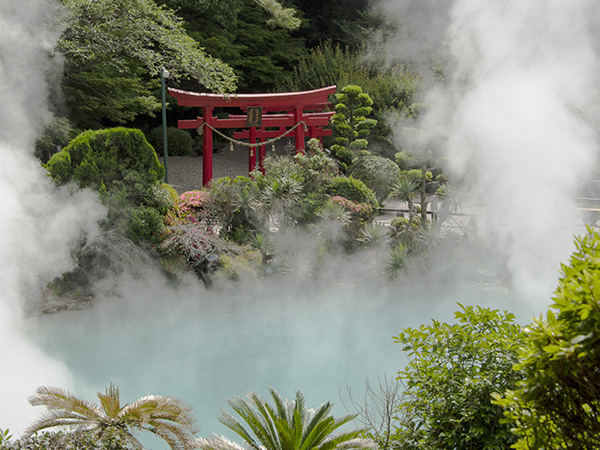
Enjoy a soothing soak in Oita’s serene hot spring villages. (Image: Yobab)
Kumamoto
One of the most active volcanoes in the world, Aso, is in Kumamoto, which is often referred to as ‘the Land of Fire’. The history of the area has been significantly altered by volcanic activity, which also gave rise to hot springs like Kurokawa Onsen in the Kuju mountain range. The region’s 17th-century Kumamoto Castle was damaged in a 2016 earthquake but is now being restored, and still holds the autumn and spring festivals.
Like the Goto Islands, Kumamoto’s Amakusa Islands have an extensive Christian heritage. It’s all illustrated at Sakitsu Church, which merges European Gothic styles with traditional Japanese tatami matting.
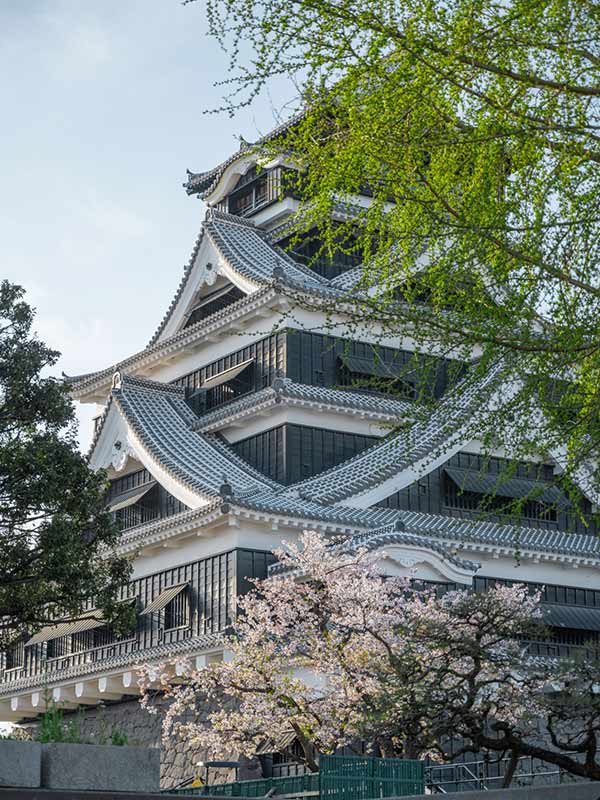
Visit Kumamoto Castle in autumn or spring to experience vibrant festivals.
Miyazaki
Sure, it’s known as a surfer’s paradise, but Miyazaki is much more than that. Set in a cave along the Udozaki shoreline, the Udo Shrine honours the Shinto deity Ugayafukiaezu no Mikoto, who is believed to aid fertility, romance and childbirth. Go on a boat ride through Takachiho Gorge in the north and look up at the soaring basalt cliffs that were formed by Mt Aso’s eruptions. You can also see amazing gorge views from above, and it’s spectacularly illuminated in the summer.
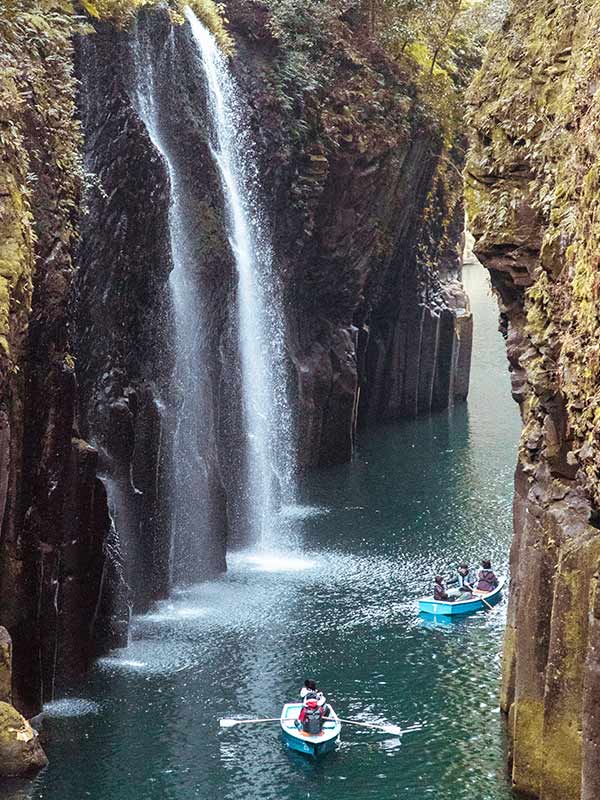
See Miyazaki from a fresh perspective with a scenic boat ride
Kagoshima
Enjoy the coral reefs of Amami Oshima or the sight of Mt Sakurajima in Kinko Bay in Kagoshima, a region that’s home to some of Japan’s best beaches. Ancient Yakusugi cedars are found in the subtropical forests of Yakushima Island, recognised as a UNESCO World Heritage site; among them is Jomon Sugi, a tree that’s an estimated 2000 to 7000 years old.
Japanese creation mythology is woven into the Kirishima mountain woods, which are honoured at Kirishima-Jingu Shrine, and on foggy hiking trails and hot springs at Kirishima Onsen. Finish your trip to Kyushu by taking off into the future at Tanegashima Space Centre, Japan’s main rocket launchpad.
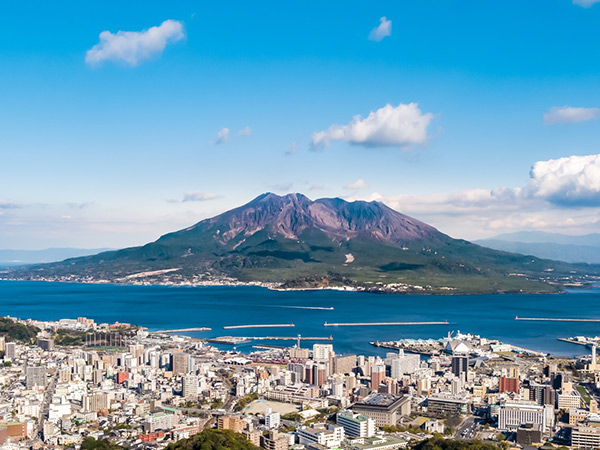
See Mt. Sakurujima’s majestic, ash-spewing eruptions.
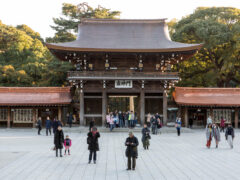
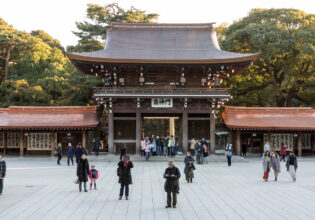
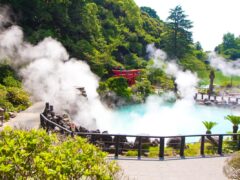

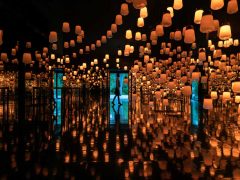
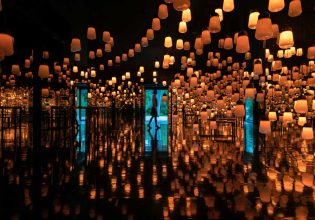
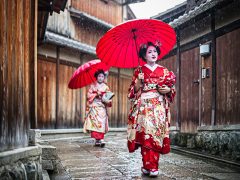

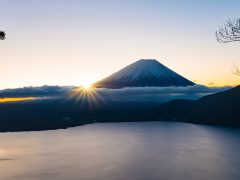
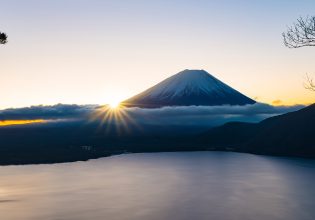
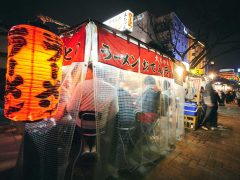


I want to experience them all